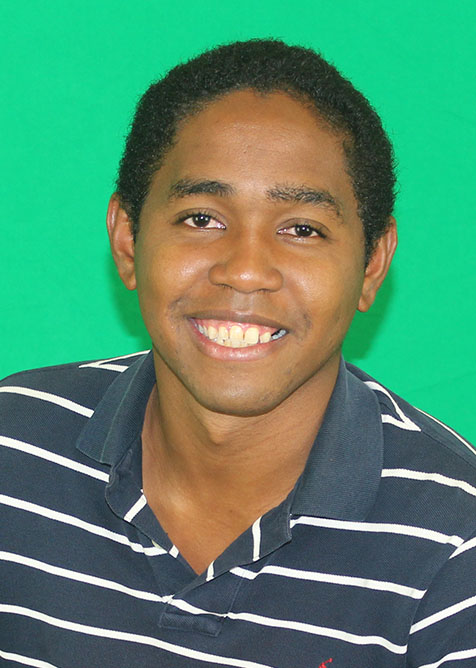
Physicists at the University of Arkansas, building on their earlier discovery, have described how a new energy can explain yet another complex phenomenon in solid state physics in a simpler way.
The phenomenon is known as the anomalous Hall effect, said Laurent Bellaiche, Distinguished Professor of physics in the J. William Fulbright College of Arts and Sciences. An article detailing the finding, “Coupling of the angular momentum density with magnetic moments explains the intrinsic anomalous Hall effect,” was published Monday, Oct. 7, as a rapid communication in the journal Physical Review B.
Bellaiche co-authored the paper with Surendra Singh, professor of physics, and Wei Ren, a former postdoctoral researcher in the physics department who is now at Shanghai University in China.
The paper builds on a new approach published by University of Arkansas physicists on March 26 in Physical Review Letters, with doctoral student Aldo Raeliarijaona (whose adviser is Huaxiang Fu) as the lead author. The American Physical Society, the premier organization of nearly 50,000 physicists around the world, publishes both Physical Review B and Physical Review Letters.
“What we did in the new paper is to use the new energy provided in the Physical Review Letters paper to re-derive — in a very simple and straightforward way — a complex phenomenon; previous theories explaining it were quite elaborate,” Bellaiche said. “Moreover, this new energy also led to the prediction of novel Hall effects.”
Raeliarijaona, Singh, Bellaiche and Fu wrote the paper published in Physical Review Letters. It shows that the angular momentum of an electromagnetic field can directly couple to the spin of an electron to produce a physical energy. This direct coupling explains known, subtle phenomena in magnetoelectric materials and predicts effects that have not yet been experimentally observed.
Both papers grew out of an idea, the genesis of which lies in an assignment in a graduate course taught by Bellaiche, an expert in computational condensed matter physics. Bellaiche asked Raeliarijaona to read some literature on multiferroic materials that exhibit ferromagnetism as well as ferroelectricity simultaneously. The particular phenomenon of interest was the control of magnetic properties by electrical fields and electrical properties by magnetic fields.
Raeliarijaona found the conventional explanation rather difficult to follow, so he came back to Bellaiche with a question of his own: Can we understand these properties in terms of a new energy that involves an interaction between angular momentum of the electromagnetic field and the spin of the electron?
The new approach, which required an interdisciplinary background in condensed matter physics and electromagnetism, led to the paper in Physical Review Letters, titled “Predicted coupling of the electromagnetic angular momentum density with magnetic moments.”
The authors believe that it is likely that this direct coupling will explain other subtle effects and will lead to the discovery of other novel phenomena in optics, condensed matter, material science, and device physics.
Topics
Contacts
Julio R. Gea-Banacloche, professor
Physics
479-575-7240, jgeabana@uark.edu
Chris Branam, research communications writer/editor
University Relations
479-575-4737,
cwbranam@uark.edu